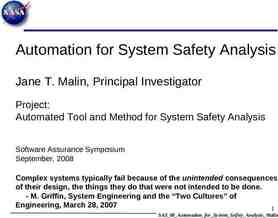What is covered in this document? RTP: Actors in a Payment Flow RTP:
12 Slides258.26 KB

What is covered in this document? RTP: Actors in a Payment Flow RTP: Message Portfolio RTP: Portfolio Glossary of Message RTP: Portfolio Message Flows For more information on the ISO 20022 Real Time Payments Group visit us at https://www.iso20022.org/payments rtpg.page ISO 20022 RTPG Message Flows Page 1

Actors: Payments Message Flow Ultimate Debtor Previous Forwarding Reimbursement agentsIntermediary agents agent Instructing agent InstructInstruct Third ing ed Debtor Initiating party Debtor agent Instructing agent 1 Instructed agent 2 Ultimate Creditor 3 Creditor agent Creditor The following message flows are intended to depict the exchange of payment items between Financial Institutions in the clearing process using ISO 20022 messages. Note: In a real-time scenario, it is only expected that the chain will extend to Debtor/Creditor and one Intermediary Agent (as a maximum). ISO 20022 RTPG Message Flows Page 2

Real-Time Payments: Message Portfolio OVERLAY SERVICES DEBTOR INTERBANK MESSAGING pain.001/002 pain.013/014 camt.052/053/054 camt.056/029 remt.001/002 pacs.008 pacs.002 pain.013/014 pacs.004 camt.056/029 remt.001/002 CREDITOR pain.013/014 camt.052/053/054 camt.056/029 remt.001/002 vvv ORCHESTRATION MESSAGES* SETTLEMENT MESSAGES pacs.009 pacs.010 ISO 20022 RTPG Message Flows ‘Core’ Payment messages ‘Optional’ usage and driven by system design and market usage * The ISO 20022 catalogue offers a vast range of orchestration messages 3

*Flow #1: BASIC CUSTOMER CREDIT TRANSFER FLOW (The Happy flow) 1. The Debtor initiates a credit transfer to the DEBTOR CREDITOR AGENT DEBTOR AGENT Payment initiation Clearing CREDITOR 2. MI Clearing Cash Management 1 2 3. PACS.008 2 PACS.008 4. 3 3 4 5 PACS.002 4 PACS.002 5. PACS.002 5 ISO 20022 RTPG Message Flows Debtor Agent, using a pain.001 or similar message. Based on the credit transfer initiation message, the Debtor Agent sends a pacs.008 to the MI which sends on the message to the Creditor Agent. The Creditor Agent validates the pacs.008 and sends a positive pacs.002 back to the MI to confirm that the message was valid. The MI then delivers a pacs.002 to the Debtor Agent and to the Creditor Agent to advise that the transaction has been completed. Upon receipt of the pacs.002 from the Central Switch, the Debtor Agent will notify the Debtor and the Creditor Agent will notify the Creditor that the Transaction was successfully completed. [Note: this basic flow will repeat in most process flows depicted within and as such shall be identified as Flow #1] Page 4

Flow #2: Rejection By Creditor Bank (Account Closed) (An Unhappy Flow) DEBTOR DEBTOR AGENT Payment initiation Clearing CREDITOR AGENT MI Clearing CREDITOR Account Closed Cash Management x 2. Based on the credit transfer initiation message, the Debtor Agent sends a pacs.008 to the MI which then sends the message to the Creditor Agent. 1 2 PACS.008 2 PACS.008 3 3 4 1. The Debtor initiates a credit transfer initiation message, using a pain.001 or similar message, to the Debtor Agent. PACS.002 PACS.002 3. The Creditor Agent conducts the necessary checks and notices the Creditor account is closed. The Agent will reject the pacs.008 by sending a negative pacs.002 with the appropriate reason code for rejection to the MI. 4. The MI will then deliver a pacs.002 to the Debtor Agent to advise that the transaction was not completed. 5 Note: “Account Closed” is one of a number of reasons a transaction may be rejected. ISO 20022 RTPG Message Flows Page 5

Flow #3: Pain.013 and pain.014 (Optional Service) DEBTOR CREDITOR AGENT DEBTOR AGENT Payment initiation Clearing MI Clearing CREDITOR Cash Management 1 2 2 PAIN.013 5 PAIN.014 PAIN.013 3 4 5 PAIN.014 ISO 20022 RTPG Message Flows 1. The Creditor initiates the request for payment to the Creditor Agent (using a pain.013 or similar message). 2. The Creditor Agent will initiate a pain.013 message directly or via the MI to the Debtor Agent. 3. The Debtor Agent notifies the Debtor of the payment request and responses in accordance with the scheme rules. 4. In the event of a negative response, a need to provide information, or a change in the payment details, the Debtor may respond using a pain.014 (or similar message) to the Debtor Agent with appropriate response included. 5. The Debtor Agent delivers the response to the Creditor Agent, directly or via the MI, using a pain.014. 6. The Creditor Agent notifies the Creditor of the Debtor’s response as appropriate using the pain.014 or similar message. 7. In the event of a positive response, the Debtor may initiate a payment instruction to the Debtor Agent* and a process flow largely in the form of Flow #1 shall take place. Pain.014 should be used to provide a negative response to a pain.013 or an amendment to the pain.013. * This step is dependant on the service offerings of the Debtor Agent. Usually the Debtor Agent would create the pacs.008 as a service to its client. 6 ISO 20022 RTPG Message Flows Page 6

Flow #4: REMT.001 and REMT.002 (Optional Service) DEBTOR CREDITOR AGENT DEBTOR AGENT Payment initiation Clearing MI Clearing Cash Management 1 2 REMT.001 or 002 2 CREDITOR ISO 20022 RTPG Message Flows The corresponding Flow #1 may be initiated at any time before, during or after this process. 1. The Debtor may also deliver a Remittance Advice or a Remittance Location Advice message, using a remt.001/002 or similar messages, to the Debtor Agent (or, to another service provider or directly to the Creditor) REMT.001 or 002 3 2. The Debtor Agent (or other service provider) delivers the remt.001/002 message to Creditor Agent (or the Creditor) 3. The Creditor Agent also delivers the Remittance Advice and Location Advice messages (if applicable) to the Creditor * The remt.001 may or may not follow the same route/channel as Flow #1 and will contain Identification and Location information. It can also be made available in a Remittance Database/Repository. Page 7

Flow #6: Cancellation Request, Request for ISO 20022 RTPG Message Flows Return of Funds and Resolution of Investigation (Optional Service) DEBTOR CREDITOR AGENT DEBTOR AGENT Payment initiation Clearing 3 MI Clearing 2 4 CAMT.029 5 PACS.008/004 CAMT.056 4 CAMT.029 5 6 6 7 Cash Management CAMT.056 3 PACS.002 CREDITOR PACS.008/004 PACS.002 7 A cancellation request or a request for return of funds would be initiated following Flow #1. 3. After a period of time, upon instruction from the Debtor or in accordance with agreements, the Debtor Agent delivers a payment cancellation request using a camt.056 seeking to return (cancel) the initial pacs.008 payment. The Creditor Agent upon receipt of the camt.056 will await a response from the Creditor to return (cancel) the payment. 4. The Creditor Agent shall respond to the cancellation request by delivering a Resolution of Investigation message (camt.029) in the event of a negative or positive response to the request for return (cancelation). 5. Depending on the framework, in the event of a positive response, the Creditor Agent may also issue a pacs.004 or 008 depending to return the payment, to the Central Switch which sends on the message to the Debtor Agent. 6. The Central Switch will then deliver a pacs.002 to the Debtor Agent and to the Creditor Agent to advise that the transaction has been completed. 7. Upon receipt of the pacs.002 (optional) from the Central Switch, the Debtor Agent will notify the Debtor and the Creditor Agent will notify the Creditor that the Transaction was successfully completed. * In a real-time environment, the camt.056 is being used more and more as a Request for Return of a payment that has already been settled.

ISO 20022 RTPG Message Flows Settlement Models 1. Deferred Net Settlement 2. Real Time Settlement 3. Hybrid Settlement ISO 20022 RTPG Message Flows 9

ISO 20022 RTPG Message Flows SETTLEMENT MODELS Description: Advantages: Disadvantages: Usages: DEFERED NET SETTLEMENT MODEL Model where real time transactions are settled in batches on a net basis at the end of a pre-defined settlement cycle or more than once per day. This settlement system requires collateralized participation Reduction in stress to the settlement system Saves on the liquidity for participants Overnights and weekends are typically high credit risk times for participants Posting transactions before they are settled also creates credit risk and liquidity costs China, Denmark, India, Japan, Singapore, South Korean, South Africa and UK ISO 20022 RTPG Message Flows 10

ISO 20022 RTPG Message Flows SETTLEMENT MODELS Cont’d Description: Advantages: Disadvantages Country Usages REAL TIME SETTLEMENT Real-time settlement: the “immediate” or “near immediate” settlement of each real time transaction exchanged between an originator and receiving entity Settlement occurs at the Central Bank in real time Typically requires participants to maintain prefunded settlement accounts at the Central bank to ensure adequate funding for transactions. Minimal/no settlement system Minimal/no credit risk Highest in liquidity costs for participants Complex liquidity management Inaccessible to smaller FIs, due to high liquidity cost Canada, Sweden, Poland, Australia, and TCH ISO 20022 RTPG Message Flows 11

ISO 20022 RTPG Message Flows SETTLEMENT MODELS Cont’d Description: Advantages: Disadvantages Country Usages HYBRID SETTLEMENT SYSTEMS Hybrid settlement systems combine the characteristic of real time settlement and deferred net settlement systems This settlement system support centralized queuing, payment prioritization and reduces payment delays Minimal/no participant default risk Minimal/no credit risk Higher liquidity costs for participants Liquidity and risk management through setting value limits Brazil, Thailand, Philippines, Peru and Mexico ISO 20022 RTPG Message Flows 12






